Building Oregon’s Future





2023
Annual Report
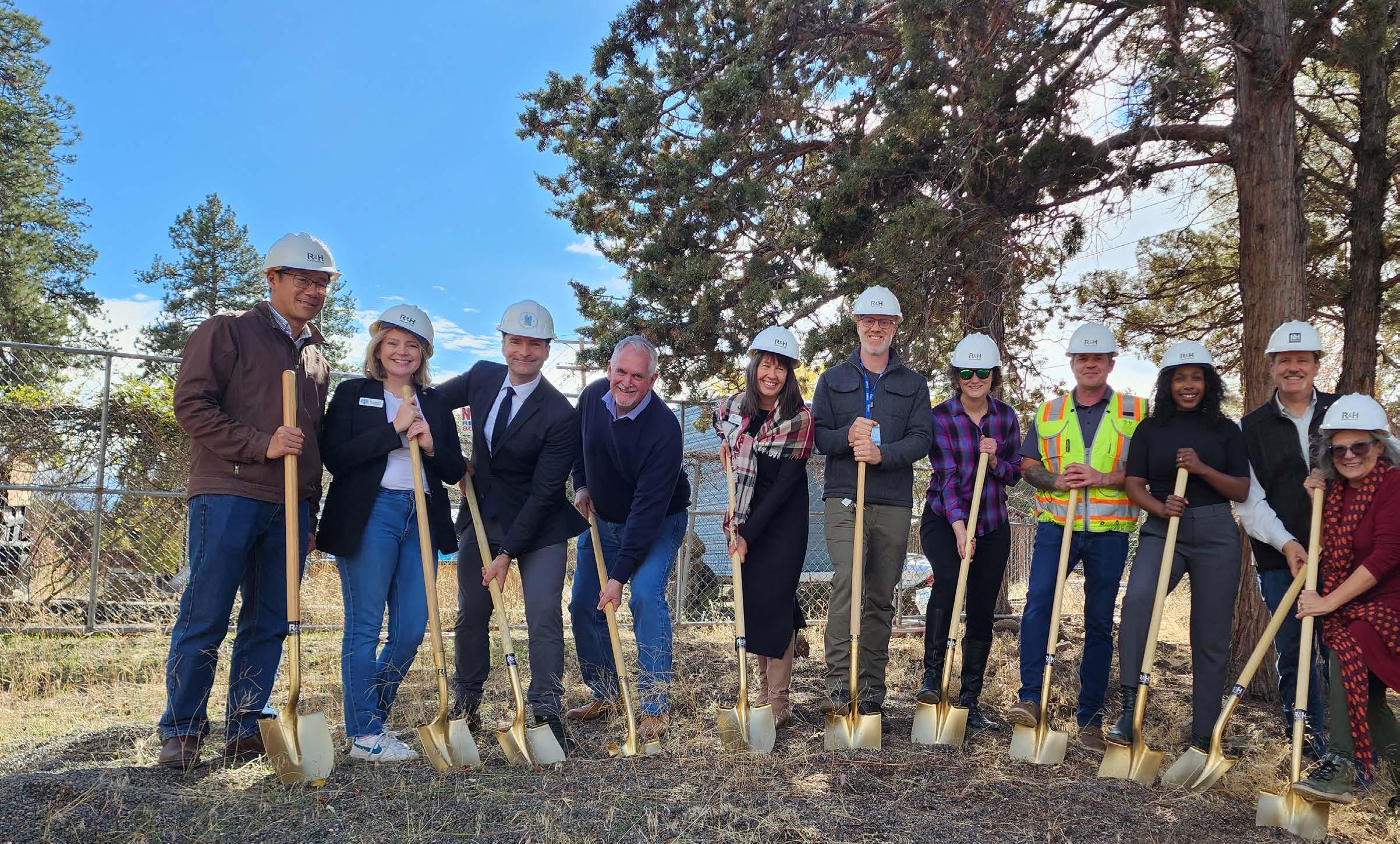
Oregon Housing and Community Services 2 Table of Contents Letter from the Executive Director ....................................................... 4 Housing Stability Council ..................................................................... 5 Progress on statewide housing goals .................................................. 6 2023 by the numbers ............................................................................. 8 Responding to Oregon’s housing crisis ............................................. 10 Pathways home .................................................................................. 14 Beyond housing ................................................................................... 20 New programs and improving agency practices ........................... 24 Centering equity and partnerships ................................................... 27 Cleveland Commons groundbreaking, Bend, OR

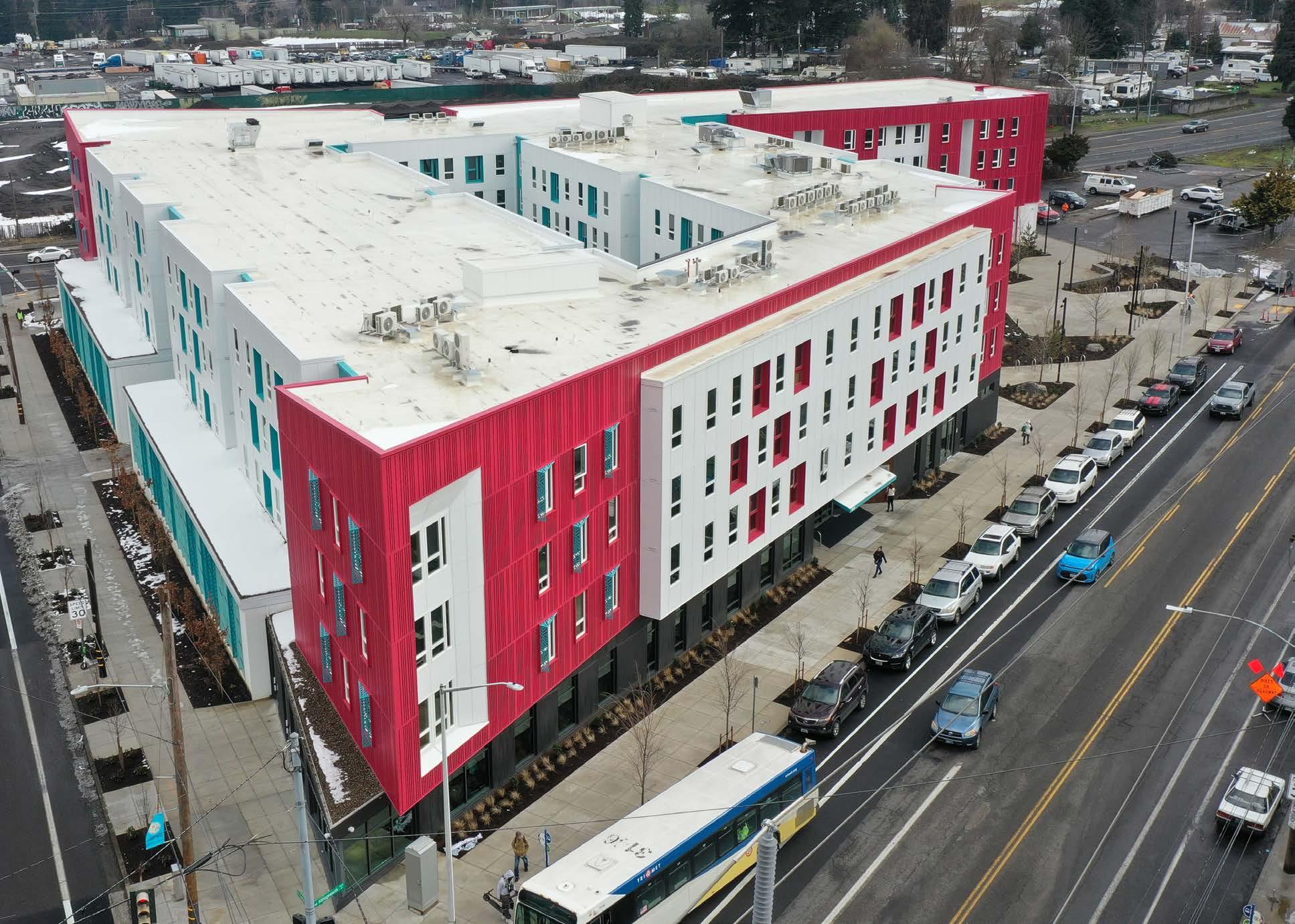
Welcome to OHCS
Oregon Housing and Community Services is the state’s housing finance agency.
We believe everyone should have access to a safe, stable, and affordable place to call home.
This Annual Report highlights and documents the work of Oregon Housing and Community Services (OHCS) in 2023.
It includes key data points, stories, program and policy updates, photos, and more. This work would not be possible without agency partners across Oregon. OHCS is just one of many organizations across the state working to address Oregon’s housing challenges.
Through this report, you will see that together we can build a better future for Oregon.
Building Oregon’s Future: 2023 Annual Report 3
Las Adelitas, affordable rental housing, Portland, OR

Letter from the Executive Director
As we reflect on the strides made in 2023, it’s with immense pride and gratitude that our progress in ensuring all Oregonians have safe, stable, and affordable housing has been one of collective vision, dedication, and resilience.
Central to our mission was the advancement of our Statewide Housing Plan. Through innovative strategies and collaborative efforts, we’ve made significant headway in addressing Oregon’s housing challenges. OHCS surpassed the goal of adding 25,000 homes to the pipeline in July 2023, and currently has met the goal at 105% of the target. The agency will release the outcomes of the Statewide Housing Plan this summer.
In the face of the homelessness crisis, OHCS responded urgently, following the governor’s declaration of emergency. By leveraging data-driven approaches, we’ve gained invaluable insights into the root causes and tailored effective interventions. Through concerted, focused efforts from state and local government, we surpassed immediate shelter goals and empowered individuals with the tools and support they need to be safely housed.
Our dedication extends beyond housing, as we recognize the interconnectedness of supportive services. By expanding our scope to provide more than just housing,
we’re addressing the multifaceted needs of our communities. Whether it’s access to healthcare, childcare, or mental health services, we’re committed to fostering holistic well-being.
Furthermore, we have launched new programs aimed at fostering innovation and inclusivity. By continuously improving agency practices such as streamlining the funding process or creating a modular housing program, we’re adapting to meet the evolving housing needs of Oregon.
Throughout our endeavors, equity remains at the forefront of our priorities. We’re steadfast in our commitment to centering equity in all aspects of our work, ensuring that every Oregonian has equitable access to housing opportunities.
None of these achievements would have been possible without the invaluable collaboration of our partners across the state. We’ve proven that when we work together, there’s no limit to what we can accomplish.
As we look ahead, let us carry forward the spirit of collaboration, innovation, and equity. Together, we will continue building Oregon’s future—one home at a time.
Andrea Bell, OHCS Executive Director
Oregon Housing and Community Services 4
OHCS Executive Director Andrea Bell speaking at an event
Housing Stability Council
Oregon’s Housing Stability Council is OHCS’ advisory body. The nine council members provide leadership and review and set policy for the development and financing of affordable housing throughout Oregon. The council also helps guide and advocate for the agency’s work. In 2023, Maggie Harris, Erin Meechan, and Kristy Rodriguez were newly appointed to the council. The diverse voices of the council help support OHCS’ mission and provide valuable perspectives in addressing Oregon’s housing needs.






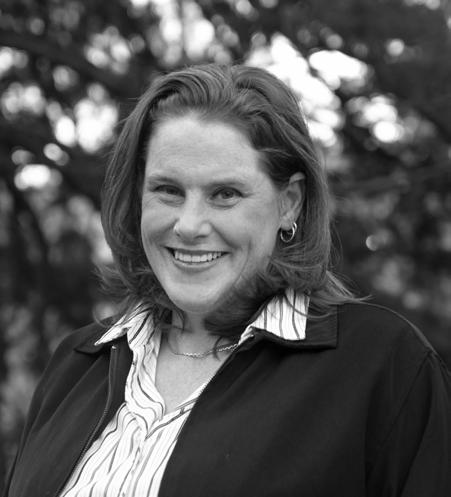

Margaret (Maggie) Harris

Building Oregon’s Future: 2023 Annual Report 5
Mary Ferrell Councilmember
Councilmember
Erin Meechan Councilmember
Kristy Rodriguez Councilmember
Javiar Mena Councilmember
Sharon Nickleberry Rogers Councilmember
Claire Hall Chairperson
Sami Jo Difuntorum Councilmember
Mary Li Councilmember
Progress on statewide housing goals
OHCS is in the final stretch of its five-year Statewide Housing Plan (SWHP) launched in 2019. Scheduled to wrap at the end of June 2024, the SWHP set a strategic direction for the agency, laying out agency priorities and goals. In 2023 OHCS celebrated a significant milestone, surpassing its goal to triple the existing pipeline of affordable rental housing to 25,000 homes. The agency is on track to meet all its statewide housing goals by July 2024.
A lot has changed since 2019. The pressing need for affordable housing continues to outpace housing production and development. Operating costs of affordable housing properties have increased and face volatility. Homelessness is top of mind for
Oregonians across the state.
OHCS has worked hard with partners across the state to adapt, ushering in new strategic initiatives both internally and externally. Internally, the focus is on operational excellence as the agency works to carry out the historic investments from the 2023 Legislative Session. Externally, OHCS and its partners have started to implement major process changes and new programs.
As OHCS looks toward the future, it will need the collaboration and participation of partners across Oregon to determine a strategic direction that lifts communities on the margins and promotes statewide access to safe, stable, and affordable housing.
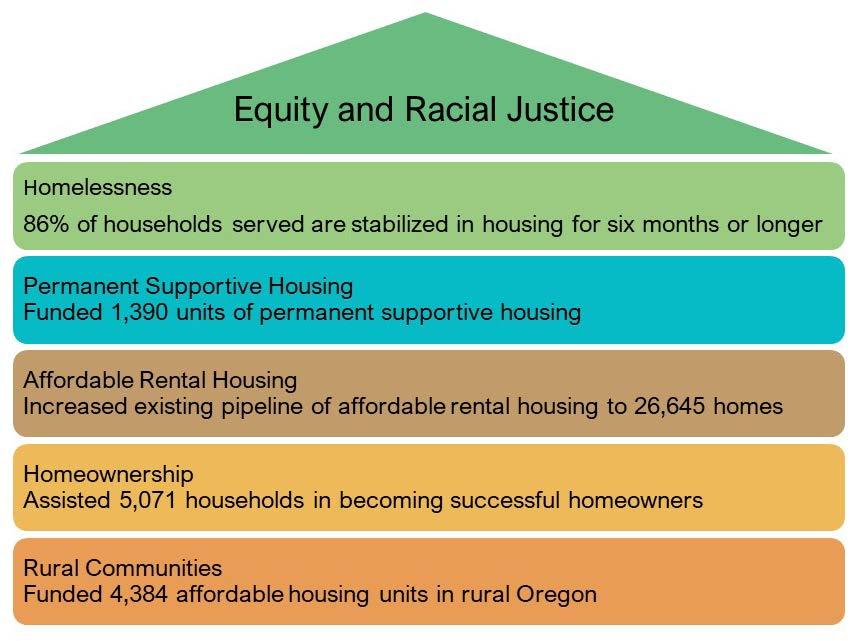
Oregon Housing and Community Services 6
Angie in Jackson County, was facing multiple medical challenges while being unhoused and struggling with diabetes. Through the help of local housing assistance agencies, she has obtained safe and stable housing. She is thrilled and feels grateful for the kindness and respect shown to her by others, from community partners to the construction crews, treating her as a neighbor. This experience has given her immense hope for the future, as she now has access to the housing and resources necessary to stabilize her medical needs. In addition, her dreams of going to college are once again a reality.

Understanding homelessness via HMIS Data
The Homeless Management Information System (HMIS) is a tool that collects and manages homelessness-related data. It provides valuable insights by capturing information on:
• Population demographics
• Shelter utilization and capacity
• Patterns of homelessness
• System engagement
• Service utilization and effectiveness
• Outcomes and success rates
• Homelessness causes and risk factors
• Homelessness prevention efforts, and
• System performance and coordination
Data on people experiencing homelessness is complex because multiple organizations, local government and entities track this data in different ways and in different systems. OHCS receives data only for the programs that are funded by OHCS. The funding landscape for homeless services is vast and involves many partners which means that the data systems are varied across multiple providers and lack overarching coordination and governance structure.
OHCS is resuming engagement with Continuums of Care and homeless service providers across the state to find a solution to unify data from the three systems and allow analysis of statewide HMIS data. This would provide evidence-based insights into trends, challenges, and opportunities. These insights could then inform policy decisions, resource allocation, and the development of targeted interventions to address homelessness more effectively.
Building Oregon’s Future: 2023 Annual Report 7
2023 by the numbers
Putting data transparency at the forefront, OHCS launched seven new data dashboards and reports in 2023. This information helps OHCS and housing partners to understand the state of housing in Oregon through numbers. Below are a few highlights from each new dataset. Launch of the data dashboards
Homeownership Dashboard
1,993 people were served through homeownership counseling and education.
Affordable Rental Housing Dashboard
Over $405 million in funding was allocated to build or preserve 3,892 homes serving 1,137 households at or below 50% of area median income.
Agricultural
Worker Housing Study
1 in 4 farmworkers interviewed said they want to own their own home but face barriers.

County Profiles Dashboard
66% of Oregonians who are white are homeowners while only 44% of Oregonians who are Hispanic/Latino/a/x are homeowners.
Affordable Rental Housing Preservation Dashboard
OHCS anticipates over 4,700 homes are slated to lose affordability in the next 5 years. This means rents for these homes will convert to market rate unless affordability is preserved.
Minority, Women-owned Emerging Small Businesses (MWESB) Dashboard
MWESB firms made up of 27% of total development costs of the 35 projects completed in 2023. This is an increase of $48 million invested in MWESB firms compared to 2022.
OHCS Emergency Homeless Response Dashboard
OHCS has surpassed all three housing goals set by the governor in emergency shelter, rehousing unsheltered households, and homeless prevention.
Oregon Housing and Community Services 8
Funded affordable rental and homeownership developments throughout Oregon in 2023 In 2023, OHCS allocated over $405 million to fund affordable rental housing development translating to 3,892 homes. More than $31 million was allocated to fund homeownership development. Families with low incomes will be able to buy 297 homes built with these funds at affordable prices. In total, OHCS has allocated over $436 million to create affordable rental and homeownership opportunities across the state.
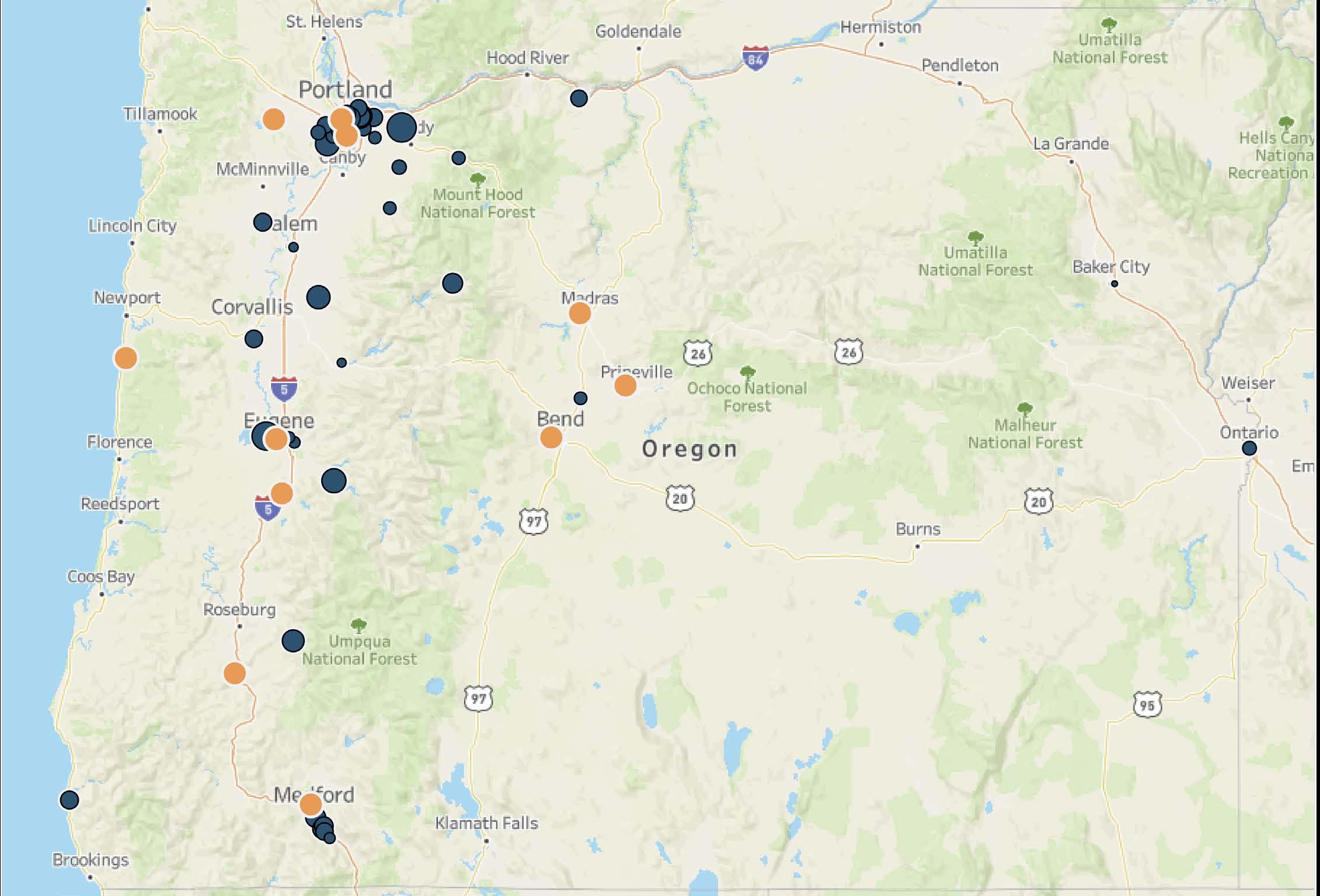
Building Oregon’s Future: 2023 Annual Report 9
housing Homeownership
Rental
Map key Total units 10 50 100 150 200+
Map of affordable housing development throughout Oregon
Responding to Oregon’s housing crisis
Gov. Tina Kotek used her first full day in office on January 9, 2023, to issue three Executive Orders to address homelessness and housing instability and their root cause: housing affordability.
Declaring homelessness as an emergency
Gov. Kotek’s Executive Order (EO) 23-02 declared a state of emergency due to homelessness in regions of the state that had experienced an increase in unsheltered homelessness of 50% or more from 2017 to 2022. EO 23-09 expanded this definition, which added Clatsop, Linn, and Malheur County. OHCS supported the work as the leading agency coordinating housing emergency order work. The counties colored in the map to the right are the regions where a homelessness emergency was declared.
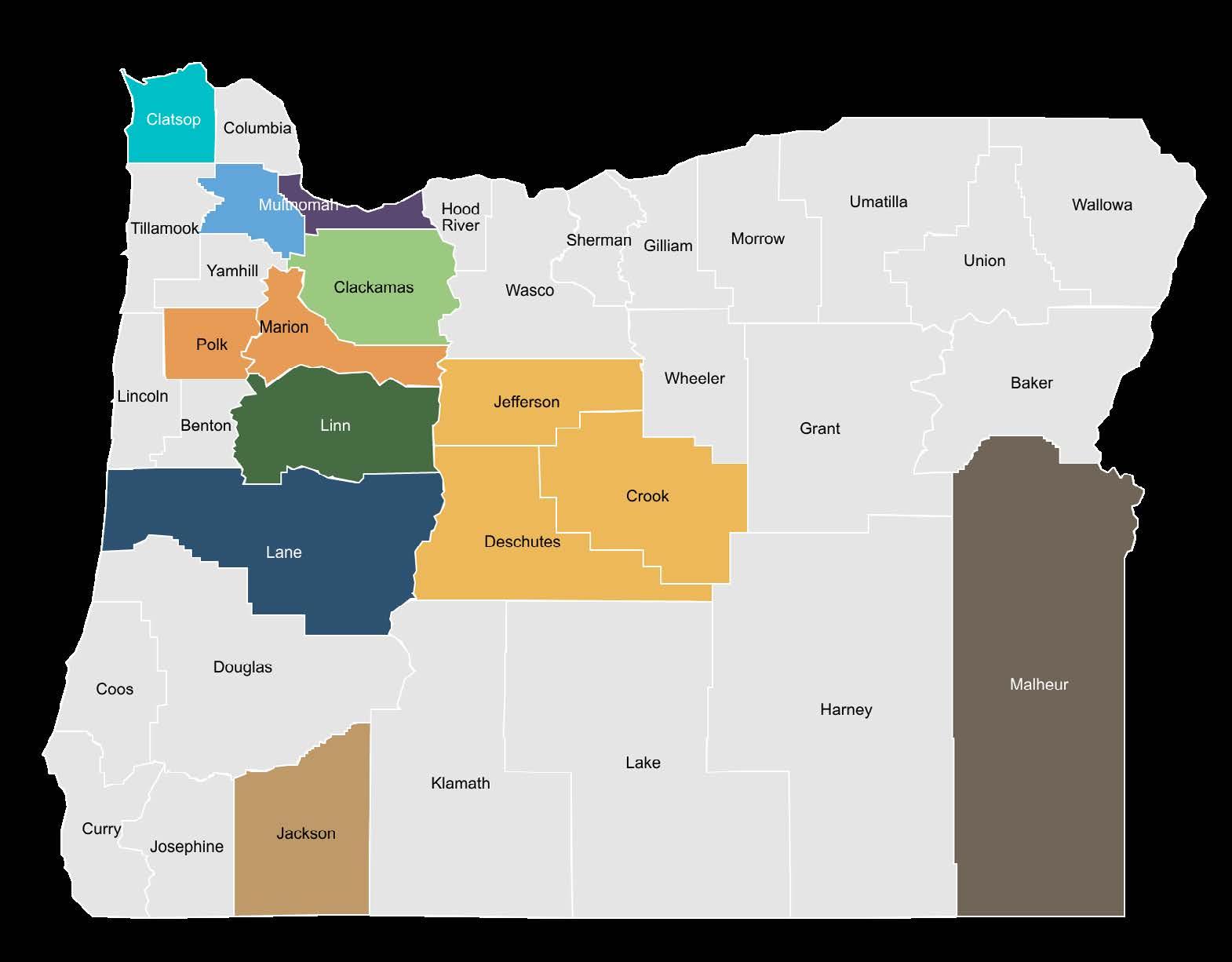
Housing goals and outcomes



Map of EO 23-02 and EO 23-09
1,047
low-barrier shelter beds created
1,426
unsheltered households rehoused
In alignment with the Executive Orders, Gov. Kotek also proposed three actionable goals to be achieved by Jan. 10, 2024.
• Add 600 low-barrier shelter beds in emergency areas.
• Rehouse at least 1,200 unsheltered households in emergency areas.
• Prevent 8,750 households from becoming homeless statewide.
9,024
households were prevented from experiencing homelessness
Through concerted, focused efforts from state and local government, as well as the critical service delivery partners throughout the state, Oregon surpassed the goals set by the governor. Housing goals results are shown to the left.
Oregon Housing and Community Services 10
Accelerating housing production
EO 23-04 set an ambitious housing production goal of 36,000 homes per year and established the Housing Production Advisory Council (HPAC), a group of experts charged with developing an action plan to meet the new construction targets.
OHCS also served on the HPAC to provide housing expertise and guidance. On Dec. 27, 2023, HPAC ratified its recommendations that sought to identify changes to state policies that reduce barriers to housing production, thereby helping the state meet the new production goals for affordable and market-rate housing. These recommendations represent a starting point and are not final, providing a solid foundation for Gov. Kotek to consider as she works toward meeting the production goals outlined in the executive order.
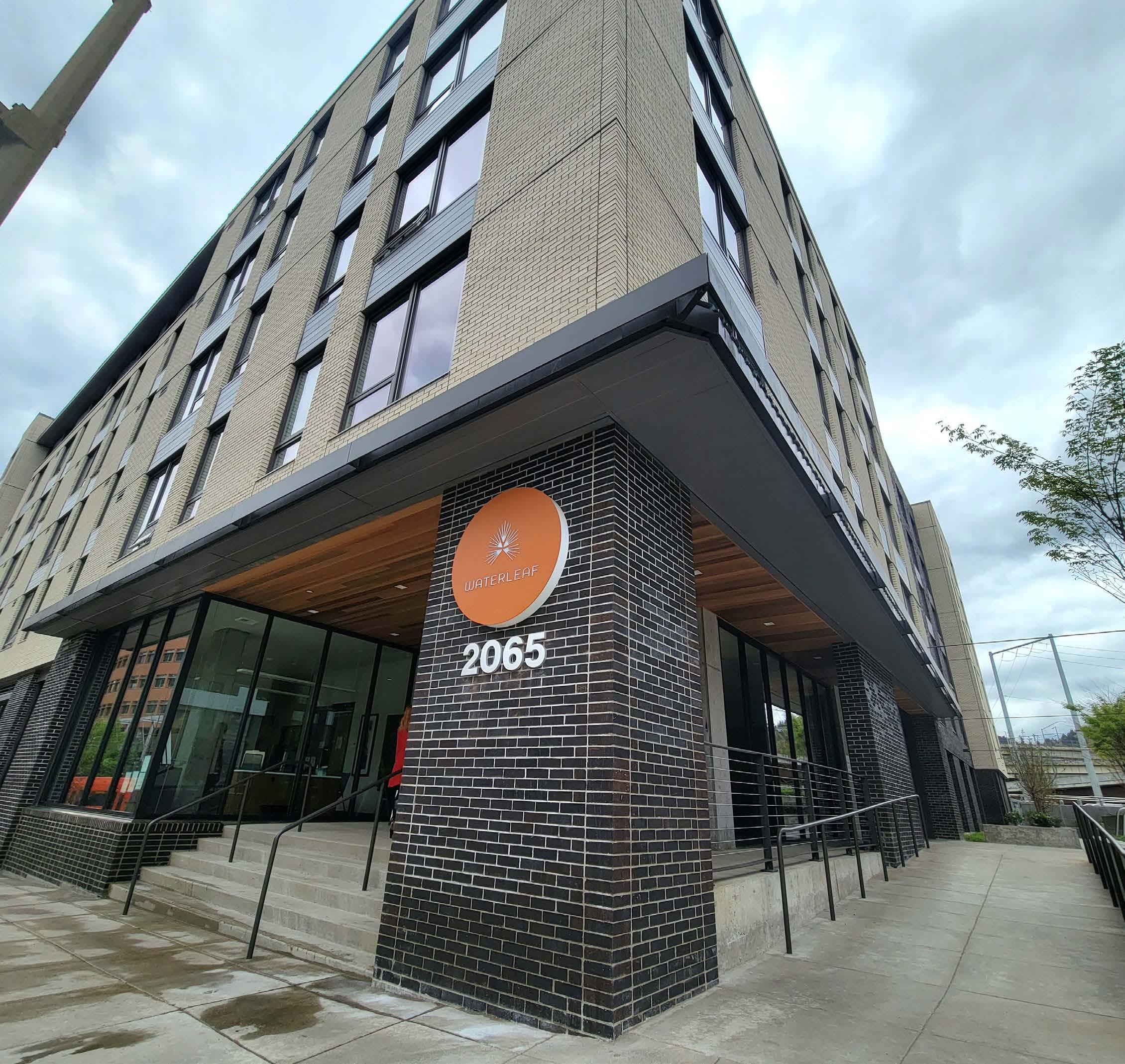
Evan in Multnomah County, was overjoyed to finally receive the keys to his new home after a long wait. As an undocumented day laborer, he had faced numerous challenges and struggled to find a safe and warm place to sleep every night. Having his own apartment was a dream come true for him and brought him immense happiness and motivation. He is truly an inspiration to everyone he meets and shares his story with.
Building Oregon’s Future: 2023 Annual Report 11
Responding to Oregon’s housing crisis
Largest investment in housing statewide
The Oregon State Legislature acted swiftly in partnership with Gov. Kotek. During the 2023 Legislative Session, it passed House Bill 5019 and House Bill 2001 to fund and support the emergency response efforts outlined in the Executive Orders and goals.
In total, housing investments for the 2023-25 biennium allocated by the Oregon Legislature totaled $1.14 billion. Along with the historic investment level, Oregon saw many policy concepts related to addressing our state’s housing needs.

Legislative investment outcomes
$80 million distributed to counties where homelessness was declared as an emergency to support community plans for sheltering and rehousing people $19 million to help Oregonians prevent eviction and homelessness
$34 million
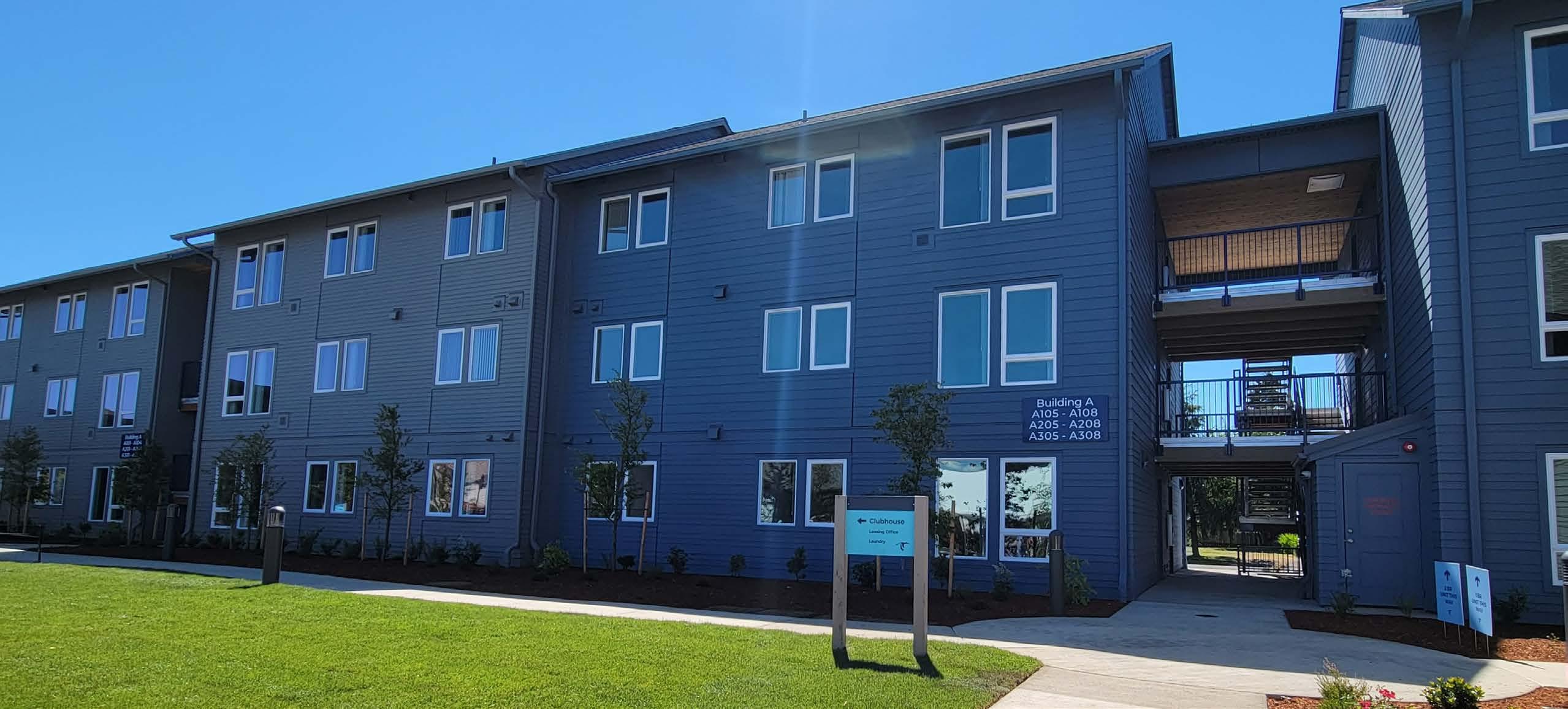
Oregon Housing and Community Services 12
Willet Apartments in Tillamook, OR
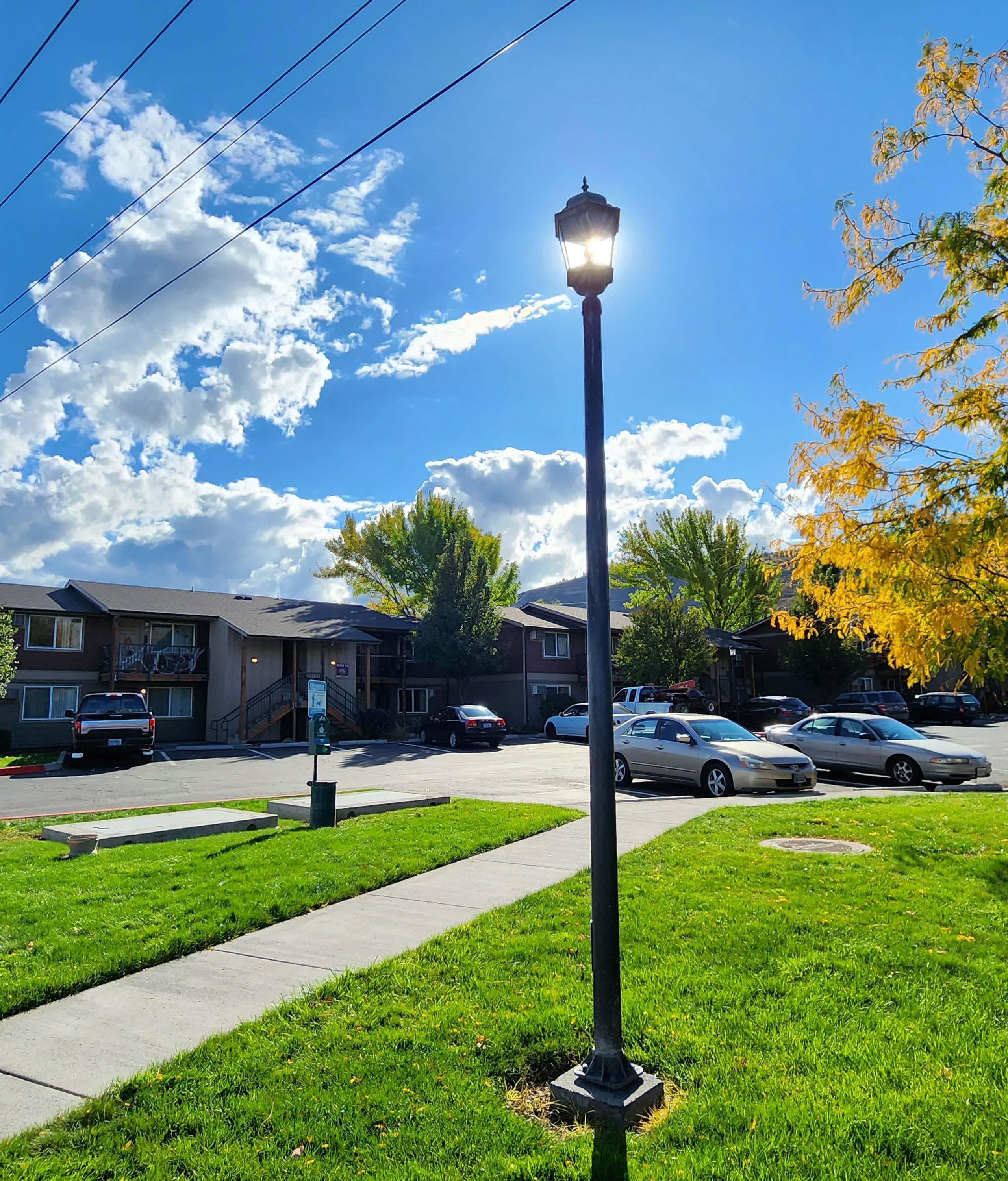
John was an unhoused person in Deschutes County who is grateful for the collaboration between PacificSource and his medical team, who helped him receive successful medical treatments and provide a safe recovery. He was initially welcomed into the Franklin Avenue Shelter, where he could stabilize and prepare for his upcoming procedures in a safe and secure environment. After spending a few days at St. Charles Medical Center, he was transferred to Pilot Butte Rehabilitation Center for initial recovery, and then helped back to Franklin Avenue Shelter to safely continue his recovery path and prepare for future medical interventions.
Building Oregon’s Future: 2023 Annual Report 13
Pathways home
Oregon Multifamily Energy Program (OR-MEP)
OR-MEP funding helps make affordable housing buildings more energy-efficient. This means using less energy and lowering bills for people living in these buildings. The program’s energyefficient strategies reduce energy use by more than $1.8 million per year. The lifecycle of the investments averages 25 years and will continue to pay energy savings benefits for Oregonians with low-incomes for years to come.
In 2023, due to increased demand in the program, the program launched its new competitive enrollment process, called OR-MEP Open Enrollment process, which prioritizes projects serving communities with high energy burdens, including Black, Indigenous, and Communities of Color and rural communities. In the first Open Enrollment round that closed in August 2023, OR-MEP received 49 applications.
OR-MEP energy upgrades
$2.5 million in funding for energy-efficient upgrades to buildings
19 projects selected to receive funding
1,000 homes impacted with utility cost savings
Permanent supportive housing (PSH)
Permanent supportive housing is a national model that effectively serves individuals and families experiencing long-term homelessness. By providing on-site, individualized services, PSH leads to cost savings in public systems, particularly within healthcare and justice systems, and long-term housing stability for vulnerable households. OHCS continues to prioritize investment in permanent supportive housing with PSH developments operating in Portland, Ontario, Ashland, Gladstone, and Eugene.
OR-MEP energy construction
5.7 million kilowatt hours saved through energyefficient construction in reduced electric utility cost
$850,000
2,200 homes impacted with utility cost savings

served by the PSH program who were previously experiencing chronic homelessness 251 households

from the Oregon Supportive Housing Institute. These teams are working to build PSH developments across Oregon 9 teams graduated
Oregon Housing and Community Services 14
Homeowner Assistance Fund helps 1,700 households stay out of foreclosure
The Oregon Homeowner Assistance Fund (HAF), which offers federal temporary COVID-19 emergency mortgage relief for homeowners who have experienced severe financial hardships due to the pandemic, has helped more than 1,700 households stay in their homes since the program officially opened in 2022.
The program has had a lot of success helping those in rural areas and who are very low income, with most funding going to those who are 50% of area median income or below. The program also has done a great job of prioritizing homeowners whom the U.S. Treasury defines as socially disadvantaged individuals, who historically have been excluded from housing or mortgage markets. They make up 45% of all applications that have been funded to the end of 2023. While other Homeownership Division programs are intended to get people into homes, HAF has been able to keep a lot of homeowners from sliding back into rental or homelessness situations.
Down Payment Assistance program helped dozens become first-time homeowners
The OHCS Down Payment Assistance (DPA) Program awarded $22 million in down payment assistance to 21 organizations across the state. In 2023, these organizations had distributed over $7.5 million to dozens of homebuyers for homes across the state that cost around $300,000. To further reduce the racial wealth gap and increase generational wealth, OHCS redesigned the program prior to its 2023 roll out to benefit first-generation homebuyers, a new eligibility category for the program. As a result, 116 of the homebuyers are identified as first-generation and 61% are identified as people of color.

In 2023, almost 1,300 households were awarded an average of $26,000 to prevent foreclosure
In 2023, 207 households were awarded an average of $36,477 for down payment assistance
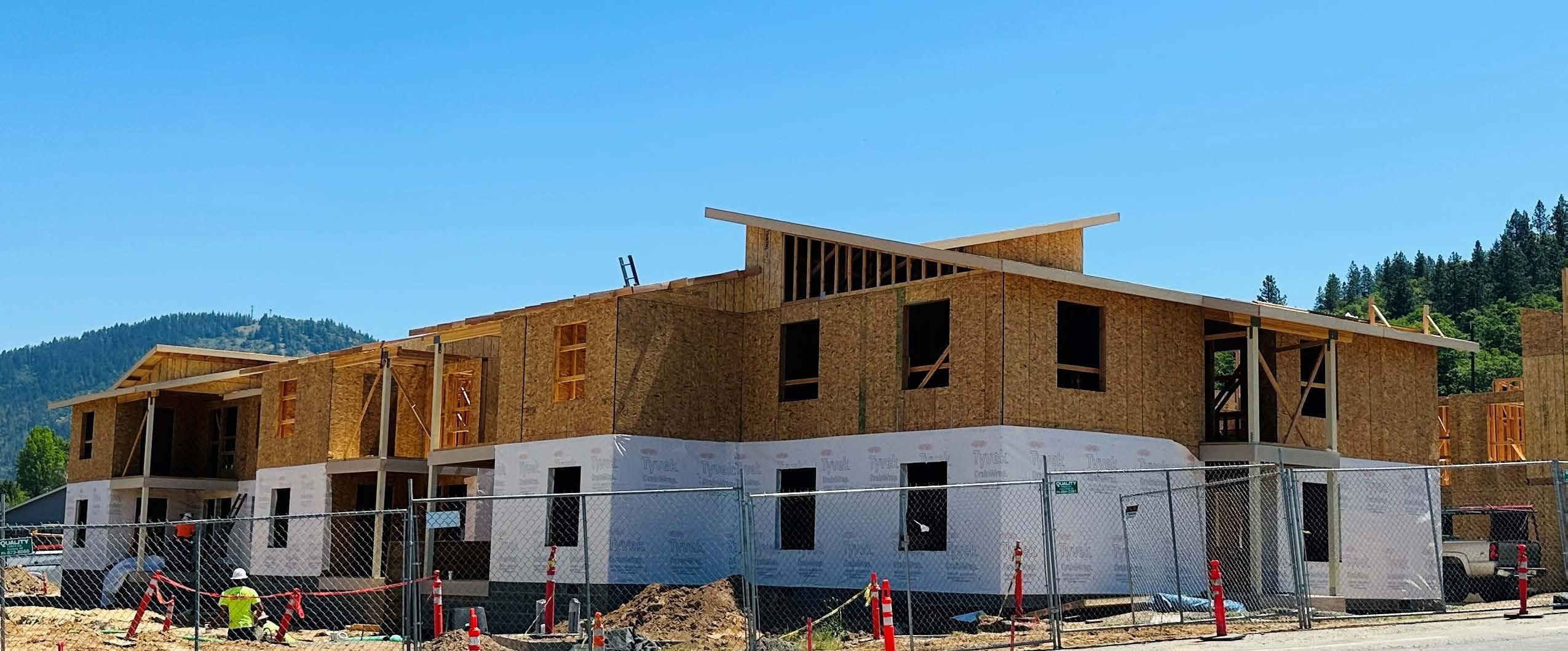 Cathedral Hills houses
Cathedral Hills houses
Pathways home
Manufactured Home Replacement Program
In 2023, the Manufactured Home Replacement Program (MHRP) helped nine (lowto moderately low-income) households replace their old, unsafe, energy-inefficient manufactured homes. Additionally, the MHRP has another 19 projects that will be completed by the end of 2024. The MHRP has or will have replaced manufactured homes in 12 different counties. The MHRP has far surpassed any initial program’s expectations. The agency served over 100 applications in the first month of this biennium (July 2023), and the program was fully allocated by September 2023. The MHRP strives to replace energy-inefficient manufactured homes through the lens of geographical and racial equity. Today, the MHRP continues to manage the remaining replacement projects and work with partners to help manufactured home owners in Oregon remain in safe, sustainable, and affordable housing.
28 manufactured homes replaced



Daisy of Vale, Oregon, was one of those homebuyers when she faced eviction from her rental home after her landlord needed to sell the house. With more than a yearlong wait list for rentals in the area, Daisy was facing the very real possibility that she would soon be homeless. “Thanks to a down payment assistance grant funded by OHCS Daisy was able to work with us, not only to keep her off the streets, but to buy her first home,” said Jessica McKinney, lead housing counselor at Community in Action, a homeownership center serving Malheur and Harney counties. Daisy used the grant for her down payment and closing costs, which has the added bonus of making her mortgage payments affordable.
Oregon Housing and Community Services 16
Cooperatively Owned or NonprofitOwned Manufactured Parks, 45% Homeowner-owned land, 55% Households at or below 50% AMI, 75% Veterans 11% Person of color, 15%
Daisy, a Down Payment Assistance recipient, with her home
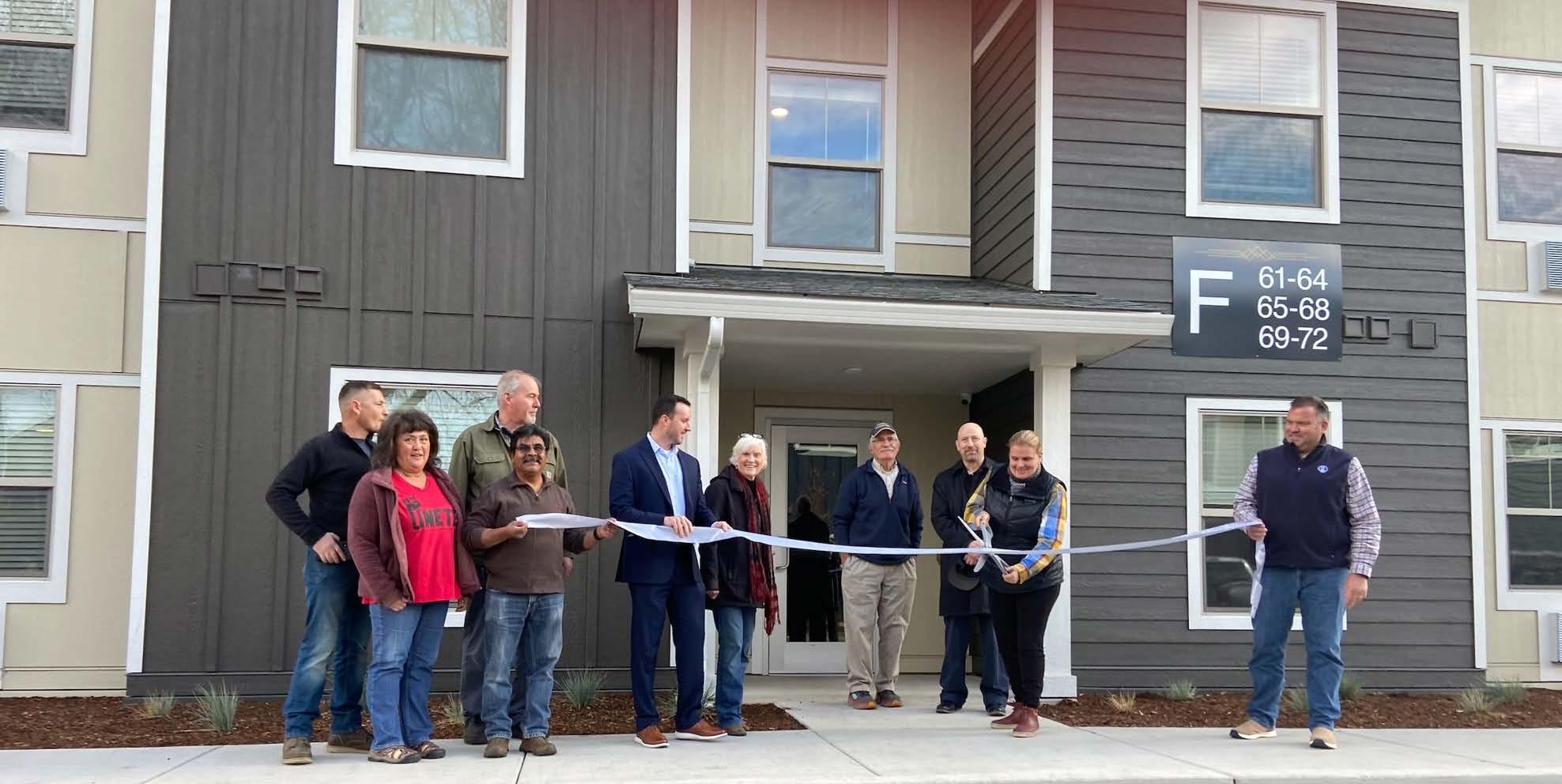
Renaissance Flats, a 72-unit apartment complex in Talent for low-income survivors of the 2020 Almeda Fire, opened on Nov. 29. Lease-up is well underway, with dozens of apartments now occupied. Renaissance Flats was one of five developments funded in Jackson County as OHCS recognized the need to prioritize this area following the 2020 Labor Day wildfires and straight-line winds disaster, which disproportionately impacted Latino/a/x families and those living on low incomes. OHCS contributed over $7.5 million in Local Innovation and Fast Track (LIFT) Rental funds to support this project. Wraparound case management services will be provided in partnership with ACCESS community action agency. Culturally specific support services will be provided in partnership with Unete, which provides a host of services to the Latino/a/x community.
Wildfire
Recovery and Resilience Account program helps hundreds of survivor households
The state Wildfire Recovery and Resilience Account (WRRA) program supported hundreds of wildfire-affected households to find temporary housing or to recover fully from the massive devastation of the 2020 Labor Day wildfires and straight-line winds. OHCS used $35.3 million of the $150 million made available by the Oregon Legislature through House Bill 5006 to begin implementing WRRA in the fall of 2021 and continued through summer 2023.
146 households
received various support services like rent assistance, home repair, and hazard tree removal
Over 65% of supported households were low- to moderate-income
450 households
provided with temporary housing
867 households
assisted with full recovery from wildfires
Building Oregon’s Future: 2023 Annual Report 17
Wildfire survivor housing opens in Talent, Oregon
Renaissance Flats, Talent, OR
Pathways home
LIFT and incubator program help Tribes, rural communities build affordable homes
OHCS started accepting applications in early 2023 for the Local Innovation and Fast Track (LIFT) Homeownership and Homeownership Development Incubator Program (HDIP). It was the first year OHCS was able to offer HDIP, which enabled the agency to offer services not normally available with LIFT funding, including working with Tribes. The flexibility of the program allowed Tribes to determine their own homeownership needs and request the applicable support. Of the five Tribes that signed on to the program, three received nearly $475,000 in funding for down payment assistance and/or home repair, and two of them received a combined $4.5 million for housing developments on Tribal lands.
Of these LIFT awards, 11 also received over $16 million in supplemental funding through the HDIP, which was designed to provide better support for rural and high-density developments that were not served well by the LIFT program alone. The supplemental offering paved the way for the largest, most competitive LIFT homeownership offering since the program’s inception and the most rural participation (24%). Six more homeownership development projects received over $19 million in HDIP development subsidies to build 57 affordable homes that were not otherwise eligible for LIFT, LIFT Supplemental, or Tribal offerings. Overall, the addition of HDIP allowed OHCS to create a more diverse network of homeownership opportunities across Oregon.
Assisting nonprofit homeownership developers
Finally, Homeownership Development offered 14 nonprofit developers $1.6 million to expand their capacity to build quality homes in the future. These small grants are supporting a range of needs and projects including hiring new staff members, completing predevelopment work, improving equity and quality within projects, and expanding homeowner engagement and education. Estimates from applicant support show this capacity-building funding will support the development of more than 159 homes in the next three years.

OHCS awarded over $31 million in LIFT funding, which supported 13 projects totaling 265 units
14 nonprofits received a total of $1.6 million to expand their capacity to build more homes

Oregon Housing and Community Services 18
Habitat for Humanity built single-family homes, Lincoln City, OR
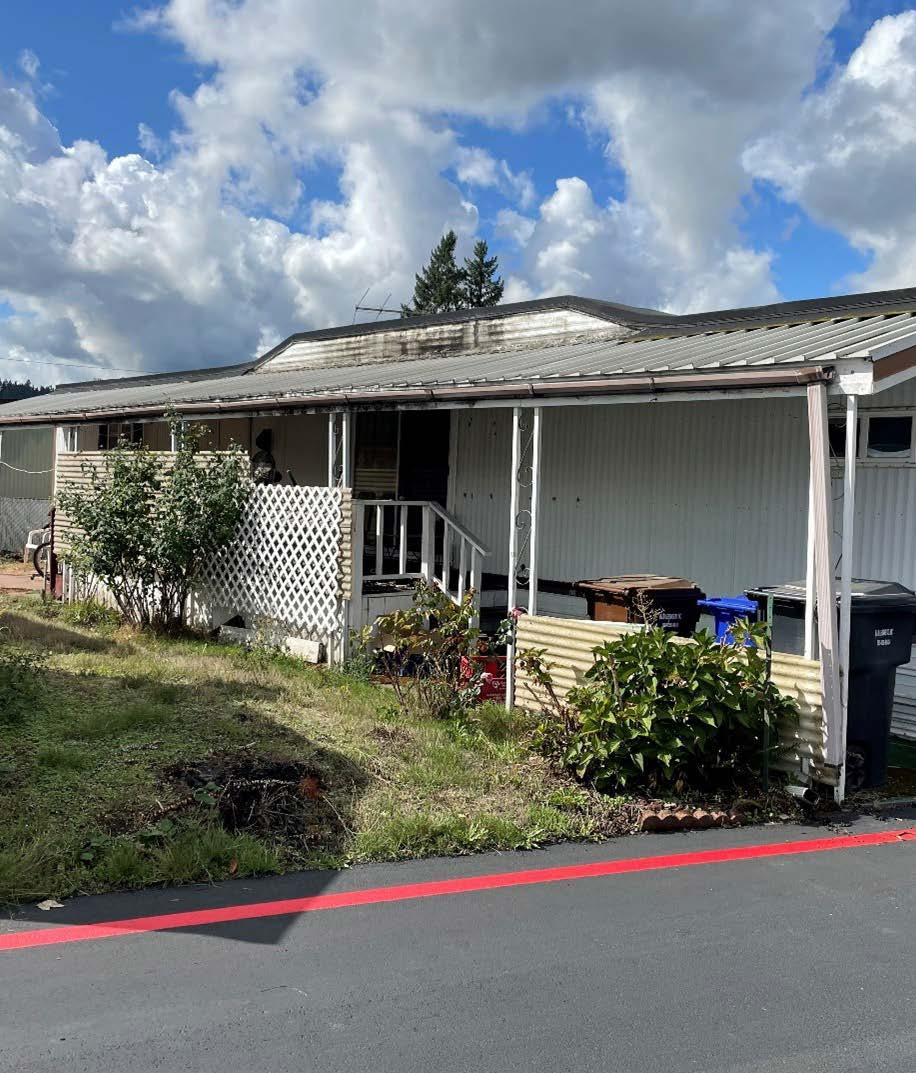
One of the many success stories is Howard, who is over 65 years old and whose income is under 40% of AMI. His manufactured home, located in Two Rivers Homeowners Cooperative, was built in 1972 and was in a serious state of disrepair. At that time, Howard’s monthly electric bill was over $300 a month. The roof had been leaking for over two years, which caused severe water damage and black mold. The home was in the process of becoming condemned, and without affordable housing options, Howard was on the brink of becoming homeless. The Manufactured Home Replacement Program replaced his home and now he lives in a new, safe, sustainable, energy-efficient home that he can enjoy for years to come.
Building Oregon’s Future: 2023 Annual Report 19
Home that was helped through the Manufactured Housing Replacement Program
Beyond housing
A focus on customer service
In 2023, OHCS responded to over 1,000 general requests, concerns, and questions that came into the agency. There are many ways Oregonians can contact the agency with a wide range of questions, requests, and needs. These include questions from partners and other organizations who have programmatic questions or feedback. This also includes questions from individuals and households seeking housing resources and assistance.

2023 also marked the first full year with an ombudsperson available to address constituent concerns regarding OHCS programs and services they are receiving. Additionally, the ombudsperson offered guidance and facilitated connections to resources for constituents with concerns or needs outside of OHCS.
7 days
total ombuds inquiries 132 total counties served 23 ombuds inquiries related to OHCS programs 31% on average to close a case
Energy, water, and weatherization
OHCS administers two energy assistance programs to help low-income Oregonians pay for home energy costs. The Low Income Home Energy Assistance Program (LIHEAP) is federally funded, and the Oregon Energy Assistance Program is a state program funded by ratepayer fees collected from Pacific Power and Portland General Electric customers. Both programs are available to Oregonians with low-incomes through their local community action agency. In addition to reducing energy burden, LIHEAP sometimes helps prevent and restore home heating systems.
The Low-Income Household Water Assistance Program (LIHWA), Oregon’s first statewide water assistance program, launched in January 2022. OHCS collaborated with water and wastewater utilities, utility associations, the community action agency network, and culturally responsive organizations to ensure that Oregon’s most vulnerable populations don’t lose access to drinking water and wastewater services.
67,121 households
received payment for furnace repair or replacement
18,561 households
257 households received energy assistance received water and wastewater utility assistance
OHCS administers the funds for the Weatherization Assistance Program, which provides energy efficiency upgrades to the homes of low-income families in Oregon. In 2023, OHCS received $15.6 million in federal dollars including LIHEAP Weatherization dollars. Bonneville Power Administration also contributed $1.7 million in utility dollars to support this work. OHCS provides grants to community action agencies to provide weatherization service. Insulation, ventilation, heating and cooling systems, and critical health and safety items were addressed in the homes of Oregon’s most vulnerable populations.
Oregon Housing and Community Services 20

In 2023, 1,531 homes were weatherized, saving households an average of $300 annually
Oregonians assisted with affordable legal assistance
Modest Means is a program administered by the Oregon State Bar that serves Oregonians who don’t qualify for legal aid but still struggle to afford legal help. The program connects clients with participating attorneys who charge fees determined by the client’s income level. Eligibility is based on the type of legal matter, income and assets, location, and availability of participating lawyers in an applicant’s area.
Navigation Centers
Navigation centers are an innovative response to homelessness. A single service hub can provide a range of services to many people in one location, including behavioral health services, veterans’ benefits, job skill development, health services, peer-to-peer counseling, and referrals for unaccompanied youth in addition to restroom, showers, basic hygiene supplies, storage and laundry facilities. Many of the centers also offer meeting rooms with case management opportunities and on-site meals and mobile vaccine clinic appointments. OHCS has funded eight navigation centers across the state.
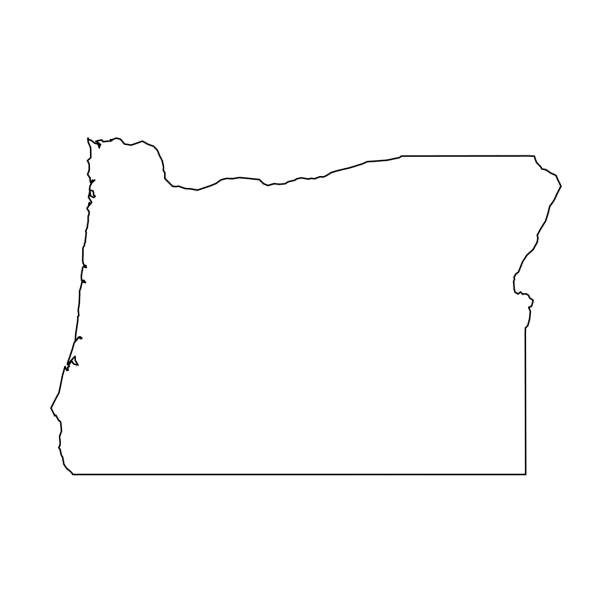 Bybee
Bybee
* Not yet fully operational
Lakes Hope Center
River Avenue Navigation Center
Gary Leif Navigation Center
Yamhill Community Action Partnership (YCAP) Navigation Center*
Lighthouse Navigation Center
City of Salem Navigation Center
City of Medford Navigation Center
The Gloria Center*
Building Oregon’s Future: 2023 Annual Report 21
Map of Navigation Centers
Beyond housing
Project Turnkey
Project Turnkey (1.0 and 2.0) successfully concluded with 32 total shelter properties in 27 cities throughout 18 Oregon counties, adding 1,382 beds/units of emergency housing.
Each Project Turnkey operation is locally created, owned and operated by local government entities, nonprofit community partners or Tribes. Each Project Turnkey operation is designed to meet the needs of its community’s priority populations, ranging from college students, domestic violence survivors, fire survivors, Tribal community members and Veterans to people experiencing chronic homelessness, including people who are medically fragile.


Oregon Community Foundation (OCF) served as the grantor and fiduciary, administering state-funded Project Turnkey grants with guidance from a diverse statewide Advisory Committee.
OHCS provided advice and support for OCF as the State’s Housing Finance Agency. Additionally, OHCS has received resources to administer funds to the recipients of Project Turnkey 2.0 grants. This includes ongoing monitoring and oversight of these funds and the projects they support.
Oregon Housing and Community Services 22
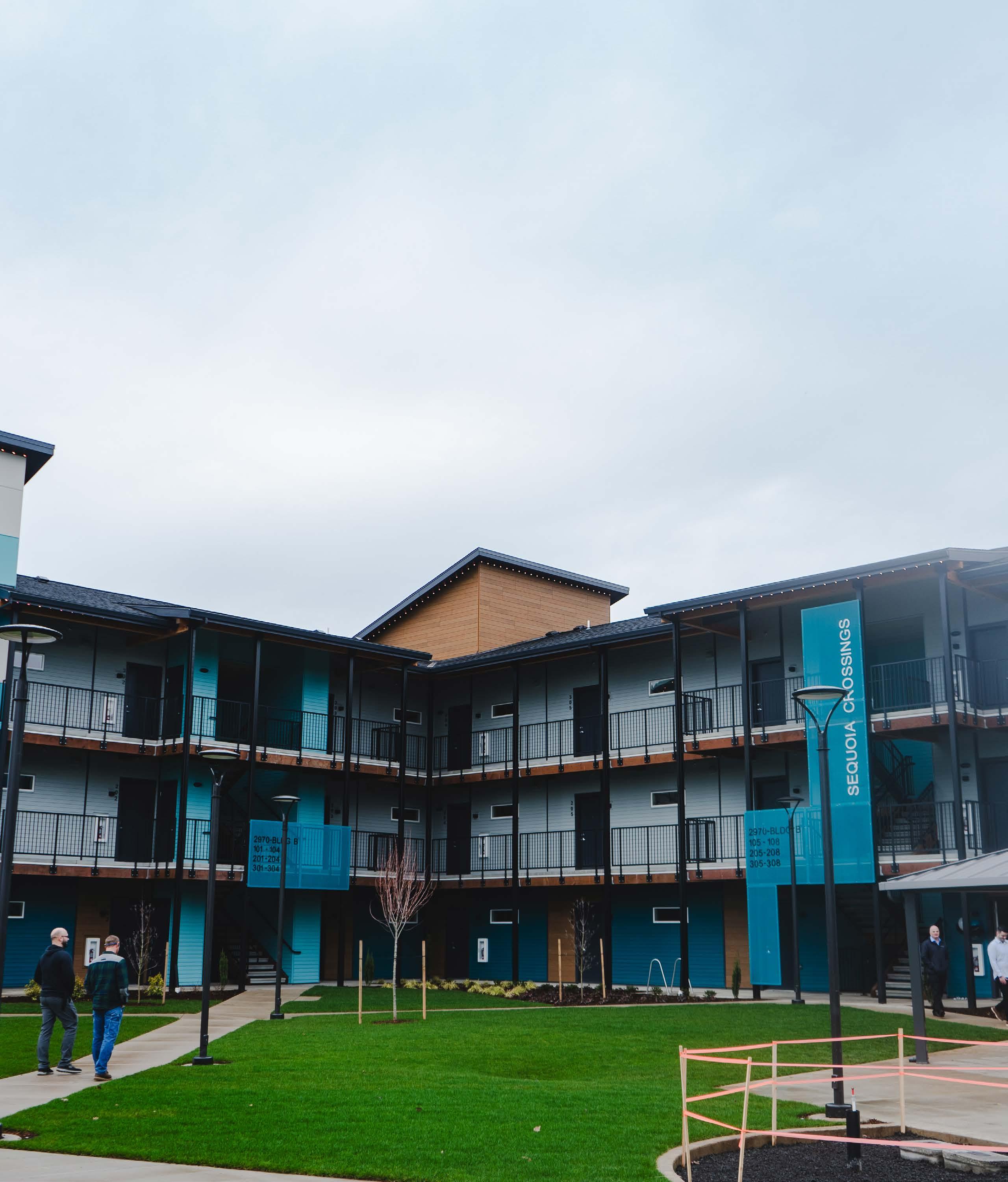
At the end of 2023, Sequoia Crossing in Salem completed construction of their 60-unit supportive housing site for families and adults experiencing chronic homelessness in Marion County. This was a partnership with Salem Housing Authority and Mid-Willamette Valley Community Action Agency. Lucy Briseno, Supportive Services Program Manager at MWVCAA, reported that they are now halfway leased, supporting five households every week with move-in. Briseno noted Sequoia Crossing has given the community hope and determination,enabling tenants to look beyond day-to-day survival. The team has achieved 100% resident engagement with early connections made in a trauma-informed approach, establishing strong service connections with residents.
Building Oregon’s Future: 2023 Annual Report 23
Sequoia Crossing Apartments, Salem, OR
New programs and improving agency practices
Implementing a new funding process
In 2023, OHCS started to hold regular engagement sessions with affordable housing partners across the state to inform a new funding process for affordable rental housing development. As the state’s housing finance agency, OHCS distributes funding allocated from state and federal programs to develop, rehabilitate, and preserve affordable rental housing developments. Previously, developers would need to apply for over 15 different funding programs separately. Now, under the new streamlined funding process, developers can apply one time for all rental housing development resources available. OHCS will work with each developer or project owner to match the appropriate funds needed for the project. The goal of this new streamlined and supportive approach is to be able to create more affordable rental housing in communities efficiently and equitably. OHCS is launching the new Oregon Centralized Application in 2024.

Co-location of Affordable Housing and Early Learning and Care funding allocated
In the summer of 2023, OHCS was excited to announce BuildUp Oregon. This partnership is supported by a $10 million investment from the Oregon legislature to support locating early childcare and education facilities with affordable housing developments. This effort aims to create or preserve 600 early learning and care slots. This program is aimed to be launched in spring 2024.
Modular Housing Funding launched
After the 2023 Legislative Session, OHCS was given a new program to administer, the Modular Housing Development Fund. House Bill 2001 awarded $20 million to be given to modular housing developers to boost production of these homes throughout Oregon. Housing is considered modular when building sections are built in a factory and then put together at the intended site. The modular method of housing development can help accelerate affordable housing production as it can lower construction costs and reduce construction schedules compared to traditional building methods. OHCS quickly worked to stand up the program and awarded funds to four organizations across the state: (1) Blazer Industries, Inc., (2) Intelifab, LLC, (3) Pacific Wall Systems, Inc. (4) Zaugg Timber Solutions, Inc.
Oregon Housing and Community Services 24
Staff getting feedback at Housing Oregon Conference
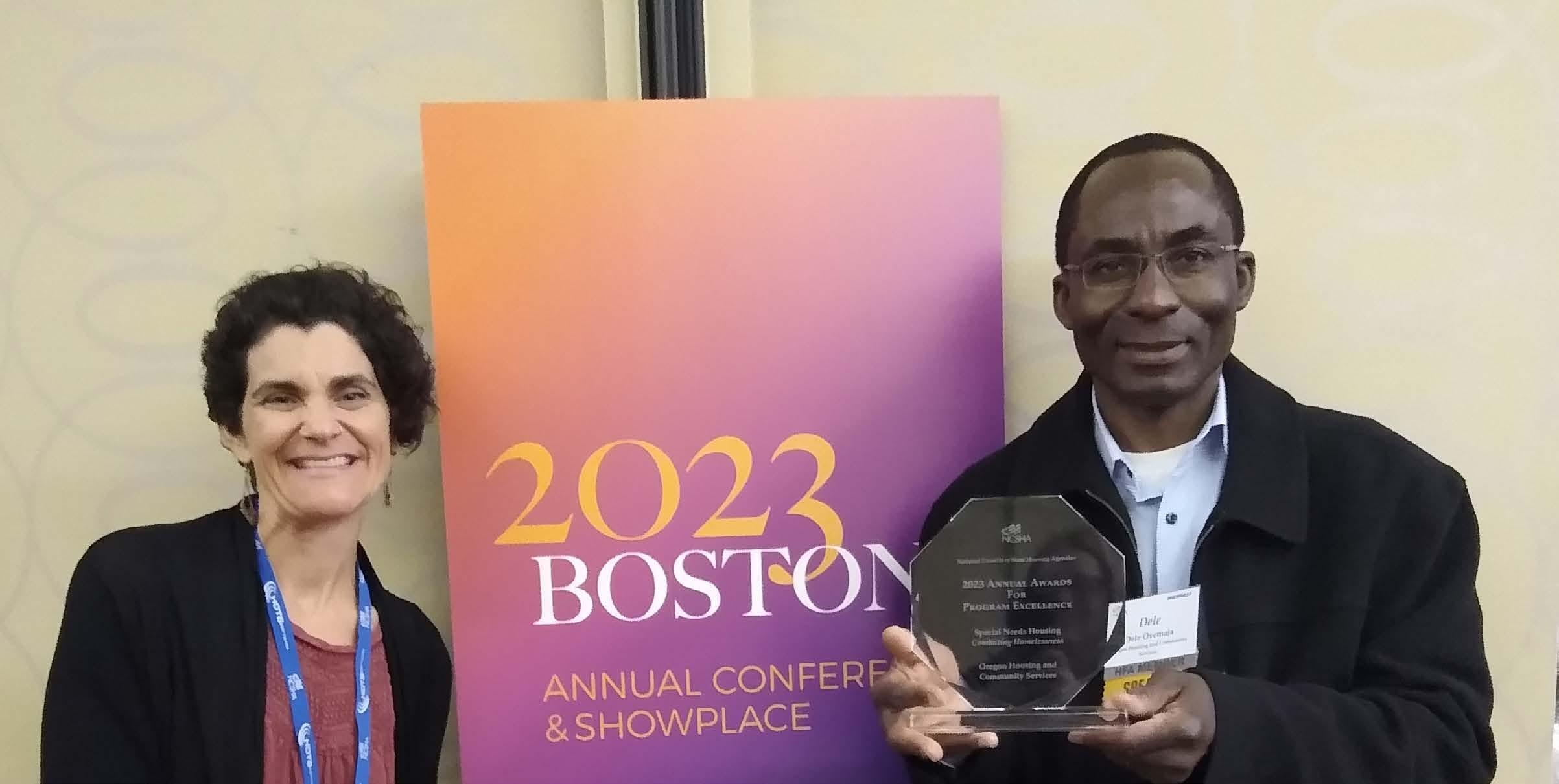
Expanding Medicaid coverage to housing
On September 28, 2022, the Centers for Medicare, and Medicaid Services (CMS) approved Oregon’s Section 1115 waiver demonstration (OHP), with an effective date of October 1, 2022, through September 2027. The 1115 Medicaid Waiver allows for Medicaid to cover health-related social needs such as food, housing, and climate-related resources. This is the first of its kind in the nation. OHCS is a partner in this work with the Oregon Health Authority, which administers OHP. Over this five-year period, OHP will use the more than $1 billion of federal resources to create a more equitable system through initiatives related to addressing health inequities, continuous eligibility, coverage expansion, and health related social needs. OHCS staff are currently participating in design and implementation work groups.
Oregon was also recognized for its leadership through its work on the 1115 Medicaid Waiver. The National Council of State Housing Agencies presented OHCS with the 2023 Award for Program Excellence.
Economist at OHCS
Did you know that OHCS has an in-house economist? The OHCS Housing Economist explores the intersections of affordable housing, statistics, and economics in Oregon. This includes supporting the implementation of the Oregon Housing Needs Analysis, modeling the costs of affordable housing development, and exploring the relationships between housing and labor markets. Understanding housing market activity and fluctuating economic conditions is critical to providing homes to Oregonians across the state.
To better provide these insights, OHCS is preparing its first State of the State Housing Report (SOSH), which will discuss demographic changes, for-sale and rental markets, and the impacts of Oregon’s housing crisis. The SOSH will also include a special topic revolving around urban and rural communities. Reports like the SOSH are one of the ways OHCS has worked to integrate internal data sources with external economic indicators to broaden understanding of housing in Oregon.
Building Oregon’s Future: 2023 Annual Report 25
OHCS staff receiving NCSHA award
New programs and improving agency practices
New workforce training center for energy programs
OHCS opened a new State Weatherization Training Center in Salem, OR to support and meet demands of Oregon’s Income-based Assistance Program for Weatherization.
This more than four-decade old program provides no-cost services to reduce qualifying households’ energy burden by increasing their energy efficiency and overall health and safety. A large part of the historic benefits of the program include training a workforce to engage in energy-related residential construction.
OHCS collaborated with the Oregon Training Institute (OTI) and the Community Action Partnership of Oregon (CAPO) to open the facility, allowing the state and its partners to develop and expand the workforce for contractors and agencies in the industry. The training center will be used to provide training, certification, and technical assistance. It includes hands-on props and focuses on the technical skills needed to weatherize Oregon’s affordable residential housing. Over 60% of households completed in the Weatherization Assistance Program are manufactured homes. Due to this, there are plans to bring a mobile home into the facility to support training on this housing type.
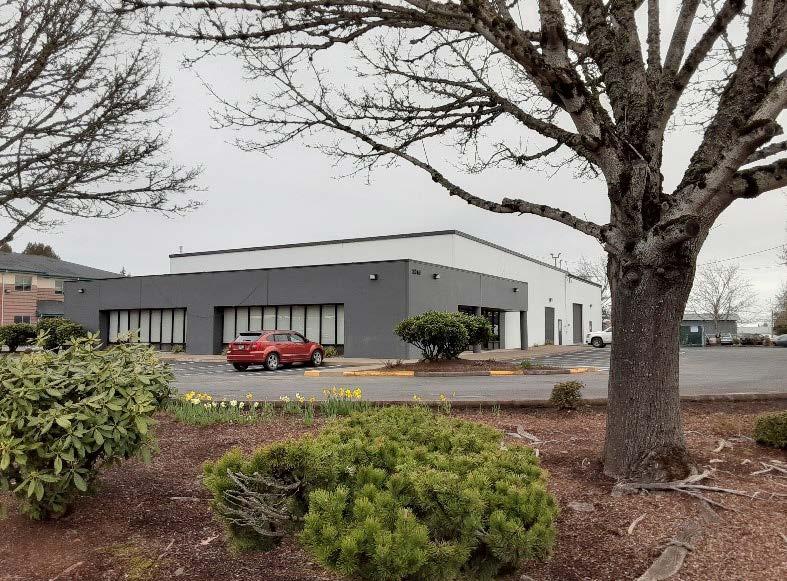
Oregon Housing and Community Services 26
New weatherization training center in Salem, OR
Centering equity and partnerships
By
and For Initiative, Native American Tribes of Oregon program
The By and For Initiative, Native American Tribes of Oregon (BAFI-NATO) program, is a significant initiative that provides state funds to create or support existing local programs to prevent and reduce homelessness in Tribal communities. This funding marks a historic moment, as it is the first time in over 30 years that all nine federally recognized Tribes have had the opportunity to participate in an OHCS program.
Through a months-long process, OHCS engaged with and learned from Tribes through oneon-one discussions with the agency’s program and policy staff and OHCS’ Tribal liaison, and attending various other meetings, including the Legislative Commission on Indian Services (LCIS), the Tribal Housing Work Group—a subgroup of LCIS, Health and Human Services, and Economic Development.
The agency learned that barriers have existed between Oregon’s nine Federally Recognized Tribes and OHCS funding since the latter’s creation and intentionally designed the program based on the feedback and needs of Tribal communities. Key barriers included the hiring capacity for Tribes—often rural and highly competitive job market with no long-term OHCS funding—and the bidding process, which can be slow due to a lack of bidders and the necessity for sole-source procurement.

During the BAFI-NATO process, we were able to address several barriers:
• Eliminating infringement on Tribal sovereignty in contracts
• Honoring Tribal Negotiated Indirect Cost Rate Agreements (NICRAs) in contracts
• Creating non-competitive direct allocations to the nine federally recognized Tribes of Oregon
1,076 people served

Building Oregon’s Future: 2023 Annual Report 27
Rental, mortgage assistance: $1.1 million Utility assistance: $233,000 Homelessness prevention: $345,000 Shelter vouchers: $49,000
Mamook Tokatee Apartments, Portland, OR
Centering equity and partnerships
Out in community
OHCS staff were out and about throughout Oregon in a variety of ways in 2023. OHCS staff attended 110 events including groundbreakings, grand openings, conferences, tours, and other community events.
Map of community events

OHCS and partner organization providing housing resources at Oregon Chinese American Community Health Fair



Oregon Housing and Community Services 28
Diversity, equity, inclusion, and racial justice in action within OHCS
Over the last year, OHCS managers have been going through Equity and Racial Justice training through the agency’s partnership with the Center for Equity and Inclusion (CEI). This is a special time set aside to continue supportive practice with agency staff members. In addition, progress continues on the Racial Analysis Equity Toolkit (REAT). REAT is being used to explicitly center equity and racial justice within agency operations, decisionmaking, and program or policy development. Staff use internal and external datasets, community engagement, and other avenues to proactively identify adverse impacts and unintended consequences on Black, Indigenous, Latinx/a/o, Asian, Pacific Islander, and Tribal communities. Strategies, goals, and metrics are created to help reduce and prevent inequitable outcomes.
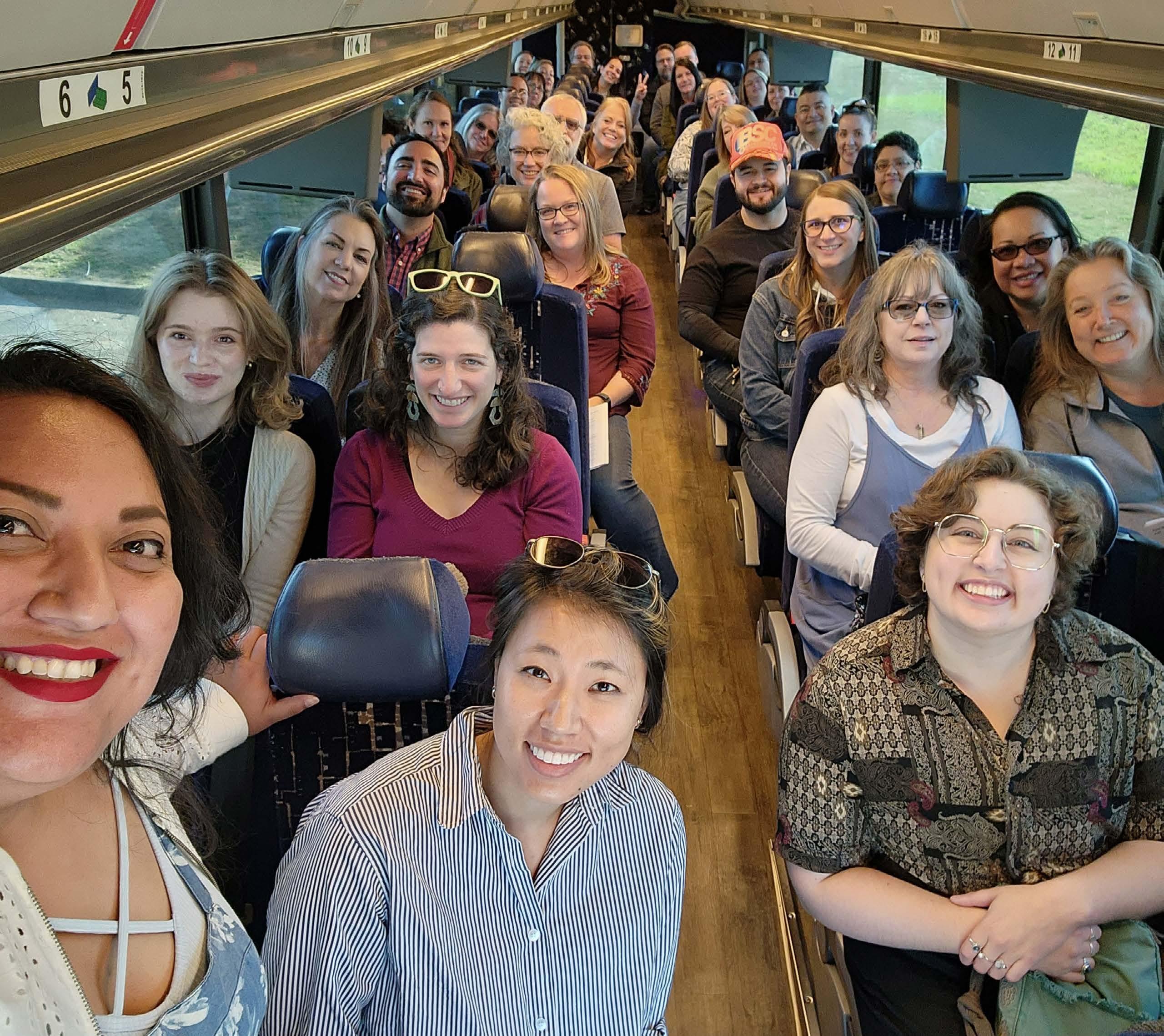
Building Oregon’s Future: 2023 Annual Report 29
OHCS staff on Fair Housing Bus Tour
Appendix A: 2023 Annual Report data sources
OHCS has worked the past several years to build up data systems to improve transparency around affordable housing development and services provided to households with low to moderate incomes. While most of the data in the Annual Report is from Jan. 1–Dec. 31, 2023, some data points may be from data time periods longer or shorter than a full calendar. This may be due to the fiscal year process a lot of our programs run on, availability of data as we rely on outside sources for information, and how data is tracked. Below you will find data point explanations in the order they appear in the report.
• Homelessness: 86% of households served are stabilizing in housing for six months or longer.
• Source: Key Performance Measures set by the Oregon Legislature. This is tracked by the OHCS Housing Stabilization Division.
• Data time period: July 2019 – December 31, 2023
• PSH: Funded 1,390 units of PSH.
• Source: This data comes from the Affordable Rental Housing dashboard, which is sourced from Prolink, where all financed property information gets stored.
• Data time period: July 2019 – December 31, 2023.
• Affordable Rental Housing: Increased existing pipeline of affordable rental housing by 26,645 funded homes.
• Source: This data comes from the Affordable Rental Housing dashboard in addition to our reported pipeline at the beginning of the SWHP. The dashboard data is sourced from Prolink, where all financed property information gets stored.
• Data time period: July 1, 2019 - December 31, 2023
• Homeownership: Assisted 5,071 households in becoming successful homeowners.
• Source: This data comes from the Homeownership dashboard, which is sourced from OHCS databases, and retroactive data files (concerns HOAP data).
• Data time period: July 1, 2019 - December 31, 2023
• Rural communities: Funded 4,384 affordable housing units in rural Oregon.
• Source: This data comes from the Affordable Rental Housing dashboard, which is sourced from Prolink, where all financed property information gets stored.
• Data time period: July 1, 2019 - December 31, 2023
• Homeownership Dashboard: Over 1,232 people were served through homeownership counseling and education.
• Source: This data comes from the Homeownership dashboard, which is sourced from OHCS databases, and retroactive data files (concerns HOAP data).
• Data time period: January 1 – December 31, 2023
• Affordable Rental Housing Dashboard: Over $405 million in funding was allocated to build over 3,892 homes serving 1,137 households at or below 50% area median income.
• Source: This data comes from the Affordable Rental Housing dashboard, which is sourced from Prolink, where all financed property information gets stored.
• Data time period: January 1 – December 31, 2023
• Agricultural Worker Housing Study: 1 in 4 farmworkers interviewed said they want to own their own home but face barriers.
• Source: This data comes from “Cultivating Home”, a study of farmworker housing in Hood River, Marion, Morrow, and Yamhill Counties in Oregon.
• Data time period: 2020-2022
• County Profiles Dashboard: 66% of Oregonians who are white are homeowners while only 44% of Oregonians who are Hispanic/Latino/a/x/ are homeowners.
• Source: This data comes from the County Profiles dashboard. The data is primarily sourced from the US Census Bureau’s annual surveys.
• Data time period:
• Affordable Rental Housing Preservation Dashboard: OHCS anticipates 4,735 homes are slated to expire affordability restrictions in the next 5 years.
• Source: This data comes from the Preservation dashboard.
• Data time period: Point in time on January 2, 2024
• Minority, Women-owned, Emerging Small Businesses (MWESB) Dashboard: MWESB firms made up of 27% of total development costs of the 35 projects completed in 2023. This is an increase of $48 million invested in MWESB firms compared to 2022.
• Source: This data comes from MWESB dashboard.
• Data time period: January 1 – December 31, 2023.
Oregon Housing and Community Services 30
• OHCS Emergency Homeless Response Dashboard
• Source: This data is tracked by the Executive Order 23-02 data dashboard.
• Data time period: January-December 2023
• Map of OHCS funded affordable rental and homeownership developments throughout Oregon in 2023
• Source: This data comes from the Affordable Rental Housing and Homeownership dashboards.
• Data time period: January 1 – December 31, 2023
• Housing goals and outcomes data
• Source: This data comes from the Emergency Homeless Response Dashboard.
• Data time period: January 2023 - April 2024
• Largest investment in housing statewide chart
• Source: This data is tracked by the OHCS Budget and Fiscal Office.
• Data time period: Point in time on July 1, 2023
• Legislative investment outcomes: $80 million distributed to counties where homelessness was declared an emergency
• Source: This data is tracked by the Executive Order 23-02 data dashboard.
• Data time period: January-December 2023
• Legislative investment outcomes: $19 million to support community plans for sheltering and rehousing people
• Source: This data is tracked by the Executive Order 23-02 data dashboard.
• Data time period: January-December 2023
• Legislative investment outcomes: $34 million to help Oregonians prevent eviction and homelessness
• Source: This data is tracked by the Executive Order 23-02 data dashboard.
• Data time period: January-December 2023
• OR-MEP energy upgrades and energy construction data
• This data is tracked by the OHCS Energy Services Section and Affordable Rental Housing Division, who rewards these dollars.
• Data time period: January 1 – December 31, 2023
• Permanent Supportive Housing data
• This data is tracked by the OHCS permanent supportive housing program manager and homeless services section.
• Data time period: January 1 – December 31, 2023
• Homeowner Assistance Fund data – foreclosure prevention
• This data is tracked by the OHCS Homeownership Assistance Fund program staff.
• Data time period: January 1 – December 31, 2023
• Down payment assistance program data
• This data is reported by Oregon’s Home Ownership Assistance Program partners and sourced from the Homeownership Dashboard.
• Data time period: January 1 – December 31, 2023
• Manufactured home program data
• This data is tracked by the program administrator for Manufactured Housing Services.
• Data time period: July – September 2023
• Wildfire Recovery and Resilience Account program data
• This data is tracked by the OHCS Disaster Recovery and Resilience division.
• Data time period: Fall of 2021 – Summer 2023
• Homeownership development data
• This data was retrieved from Prolink and the OHCS Homeownership Dashboard.
• Data time period: January 1 – December 31, 2023
• Customer service, constituent inquiry, and ombudsman data
• This data was tracked by the OHCS Public Affairs Division.
• Data time period: January 1 – December 31, 2023
• Energy, water, and weatherization data
• This data is tracked by local agencies who provide energy, water, and weatherization assistance and reported to OHCS.
• Data time period: October 1, 2022 – September 30, 2023
• Oregon’s Project Turnkey data
• This data is tracked by the program administrator, Oregon Community Foundation.
• Data time period: 2021 – 2023
• BAFI-NATO data
• This data is tracked by the OHCS Housing Stabilization Division.
• Data time period: June 2023 - March 2024

Office: 725 Summer Street NE, Suite B, Salem, OR 97301
Phone: 503-986-2000
Email: housinginfo@oregon.gov Website: https://www.oregon.gov/ohcs
Connect with us


































 Cathedral Hills houses
Cathedral Hills houses








 Bybee
Bybee




















